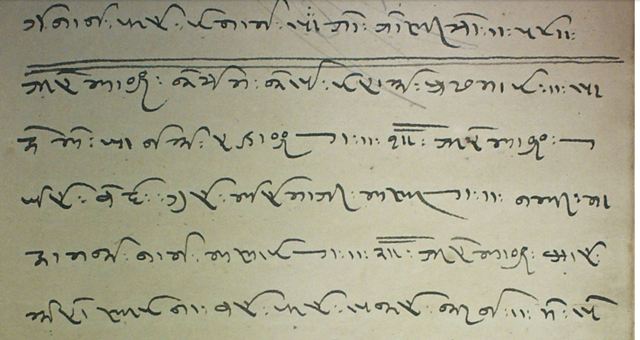Admin wrote:shivaathervedi wrote:
Now refering to quote ' Ali rupe Hari aaviya ' means Ali came in shape or appearance of Hari.
During his first visit after partition MSMS said to Waras Hud bhai first president of Ismailia Association Pakistan " Waras Ginan mey Hari ko Ali kardo".
Past three decades, what ever publications of Ginans from at least 3 countries I haven't seen word Hari in place of Ali in newly published Ginan books.
All this has already been proven wrong. Read previous discussion and the thread on changes in the ginans. There are many pages of discussions there:
http://www.ismaili.net/html/modules.php ... topic&t=18
Feel free to refresh your memory.
And if you think the shariatis of the partitions will be more happy that you say "Ali Anant" (Ali is Eternal) instead of "Hari anant" (God is eternal) , you are greatly mistaken.
Further more "Ali rupe Hari awiya" means God came in the shape of Ali, not the opposite, if you do not have the knowledge on how sentences are composed in the Indian languages, it is better not to venture in this field. You made the same translating mistake in Lakh Chorasi and many of your interpretations of other Ginanic expressions.
In English to indicate the time you may say "It is 4" but in Indian you say "4 it is" (char wagiya ay or even cha thiya, char thay che, char thaya) Needless to remind that a language is not learned in few days with the help of dictionaries.
As for Pir, of course Seyyed Imam shah was not Satadhari Pir but he was called Pir by respect like you call "Pir" Nassir Khusraw who also was not Satadhari Pir. Even among Imam shahis, they have ginans with "Syed" Imam Shah, Indra Imamuddin, Pir Imamshah etc... though they give prominence to his status.
It is wrong to say that in the past 3 decades books of ginans have been published with changes, not in Canada, never happened here.
Last thing, Manuscripts that we found in Pirana or among Imamshahis are all in Gujrati Script. Documents show that in the early 1900s' Bawa Ehmad Ali of the Imamshahis was already asking his scribes to transcribe the Khojki manuscripts of the Ismailis into Gujrati as he and the Imamshahi community did not have knowledge of Khojki.
1.Your language example is fidget. Every language has its own way of expression and grammar. Some are written left to right and some right to left and some are from top to bottom.
By the way, I know Gujrati and Khojki well but let me add, I know 7 languages of subcontinent.
2.The Ginan you mentioned is not available in any Ginan books published by Ismaila Associations, ITREB, or even in Ginans published by Recreation club. If you have complete ginan please post it.
3. Nasir did not called himself as Pir, but in his Ginans Syed Imam Shah has introduced himself as Pir. I gave references, I have more. I gave example from a Ginan Book published by Ismailia Association Kenya. How come they mentioned him as a Pir when he was not?
4.Can you mention from which area, city, or country you collected that script.
Does that particular Ginan available in any Ginan publication from Canada.
After 1969 Ginan workshops and 1975 conference, apparently there were two groups divided on Ginans. One from subcontinent and other from African continent.
5. All the Khojki manuscripts mostly start with " ALLAH TOU AAHAAR" OR " ALLAH TOU AADHAAR" followed by Bismillahir Ramanir Rahim. I have seen these manuscripts in Karachi and interior Sindh, and couple you have posted yourself which I indicated to you.
6. Syed Imam Shah was a Muslim, he did Kitabat of Quran by himself and that was kept in his dargah at Pirana, which unfortunately was stolen few years back, a valuable treasure by an opponent group.
7. You did not refuted what MSMS said to waras Hud Bhai," Waras Ginan mey Hari ko Ali kardo"!!
8.This is a million dollar question; ALI RUPE HARI AAVIYA OR HARI RUPE ALI AAVIYA?
9. Even in recent Ginan publications there is no name of Hari mentioned.

